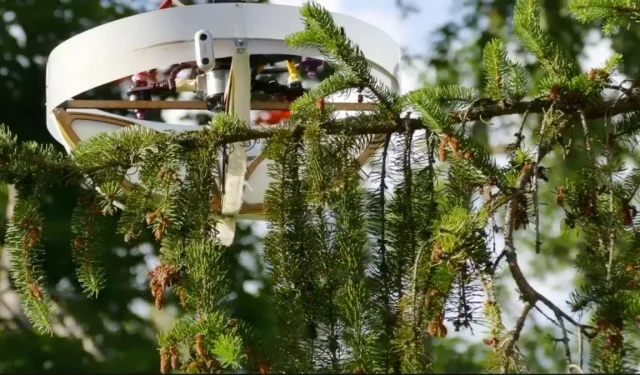A sticky drone for extracting eDNA from sheds is an invention that could be very useful for biologists.
Swiss scientists have developed at least one method for collecting DNA from the environment (eDNA) in the highest tree canopies, in a habitat largely underestimated. Instead of experienced climbers risking their lives to recover the DNA of a small insect or bird, the team sent a drone to the tops of trees to collect genetic material, giving them a clearer picture of the terrain’s organic distribution.
Sticky drone to extract eDNA from canopies
The researchers used a quadcopter equipped with a sticky collecting cage. But because tree branches bend at the slightest touch, and because the drone only needs to touch the branches to pick up DNA, the device has a pressure-based control system to evaluate the interaction between the drone and the branch. It can then adjust its position accordingly to gently lean against the branch and not knock that precious genetic material to the ground.
The drone cage would then collect samples with a sticky surface made of “adhesive tape and cotton gauze soaked in a DNA-free solution of sugar and water.”The cell spends about 10 seconds per branch to collect eDNA before returning to its base, where scientists collect samples and send them to the lab. This experimental drone has successfully collected enough genetic material to identify 21 animal species, from insects to mammals, from birds to amphibians.
An invention that could be very useful to biologists
However, scientists insist that there is still much to be done. For example, on the last day of their test, the team saw a marked drop in eDNA detection due to rain the day before, suggesting that this method would only tell them about animals that have passed since the last rainstorm. In addition, the experts noted performance differences between their two collectors, highlighting the need for additional testing of equipment options.
The researchers hope their work will make it easier and cheaper for environmental biologists to discover creatures that live in the most inaccessible places on our planet. Such an approach could help the scientific community understand how environmental changes affect biodiversity and perhaps even better identify vulnerable species before it is too late.


